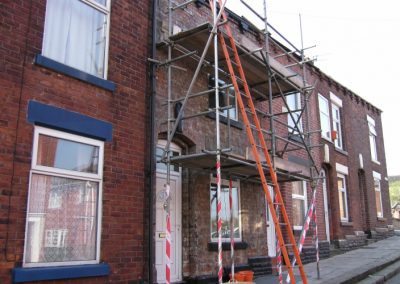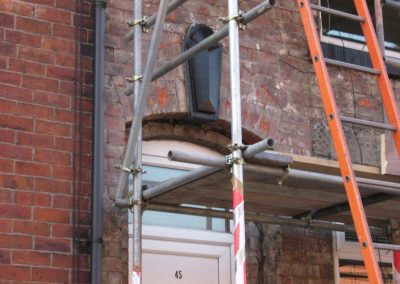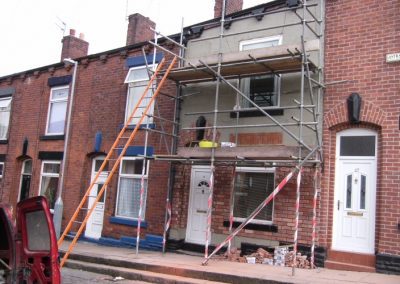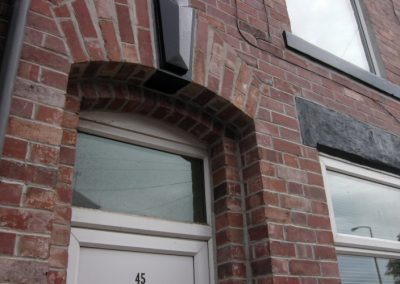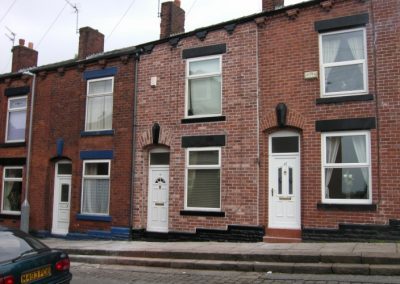Problems with stone cladding
Problems with stone cladding can be caused by badly fitted cladding. Problems with stone cladding can then occur usually in the form of dampness or detachment of actual stone cladding. This can cause serious damage to property. Stone cladding can create problems such as water ingress, it can lead to rising dampness, particularly if the stone cladding has been fitted down to the ground level and bridges any damp course detail. Some stone cladding material soaks up water, rainwater is often trapped between the stone veneer and the wall itself. Stone cladding can also pose a risk to personal injury if it’s not been bonded properly.
A typically sized piece of stone cladding weighs about the same as a 300×300 concrete paving slab. We often survey homes where huge sections are hanging on supported only by surrounding pieces of stone. In winter frosts can lead to sudden and total delamination. Stone cladding that is suspected of causing damp problems should be inspected and if it is defective it should be removed. It is not usually possible to repair stone cladding
If you are concerned or have problems with stone cladding, read on to see what can be done to a wall once the stone cladding has been removed
Taking off stone cladding off a house wall will result in damage to the bricks and mortar. Stone cladding adhesive used to bond the stone to the wall is usually cement polymer based, the same material as a swimming pool tile adhesive. Stone removal will pull the face of the brick off the wall, removing stone cladding usually results in severe brick damage, making the restoration of the brick a non-viable option
Often stone cladding removal leaves gaps around windows and doors. At Back2Brick we don’t just take cladding off, we offer restoration options for the walls from brick cladding to lime renders. The new owners of this Manchester area terrace couldn’t live with the coronation street style cladding that they had inherited (Especially with the house being in the borough where the famous coronation street soap opera is made)
If you look at the picture showing the corner detail around the doorway you will note that no mitre joints are present. This is due to the fact that brick cladding tiles can be supplied in full corner pieces or pistols as they are called in the brick cladding trade.
This attention to detail makes a perfect finish. We can source just about any bricks to be cut into brick slips, our cutting yard then slices them down into brick tiles about 20-22mm thick. We can also source pre-made 15mm clay brick slips that are manufactured as a brick tile, the same as a real brick but just thinner. On solid wall houses, we bond the slips using lime-based adhesive, this along with the lime pointing and the natural clay brick tile allows walls to once again breathe.
